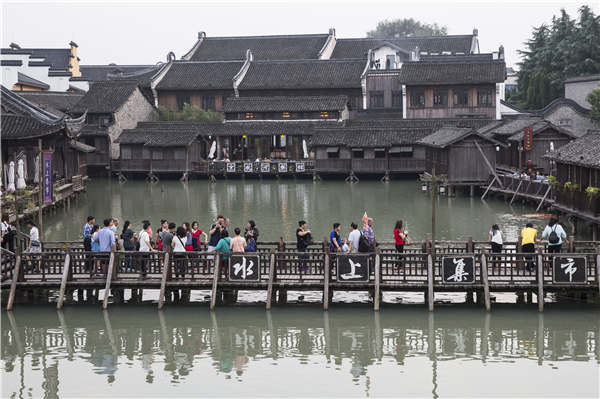
Crisscrossing waterways are now the biggest draw for visitors to Wuzhen, Zhejiang province. Visitors stroll along the banks or hop aboard boats to take in the views. (Photo by Shi Kuihua/For China Daily)
"The couplets explain where the water in the rivers comes from and if the rivers are important transportation routes," Zhou says.
There are also patterns carved under the bridges.
Tongji bridge's belly, for example, shows two dragons playing with a ball-an auspicious symbol.
The pattern under Renji is of carps jumping over a gate to be transformed into a dragon-also a blessing, especially for students.
But as the small rivers dried up and more people started driving, some arched bridges became both inconvenient and unnecessary, so they were rebuilt as parts of the streets.
As a result, bridges like Gutong have disappeared.
Since many are gone, those returning to Wuzhen after a long time may no longer seem familiar, Zhou says.
But a few bridges have survived wars and changes, such as Fuchang bridge. It was built by intellectual Hu Min during the Ming Dynasty and has lion statues.




















































